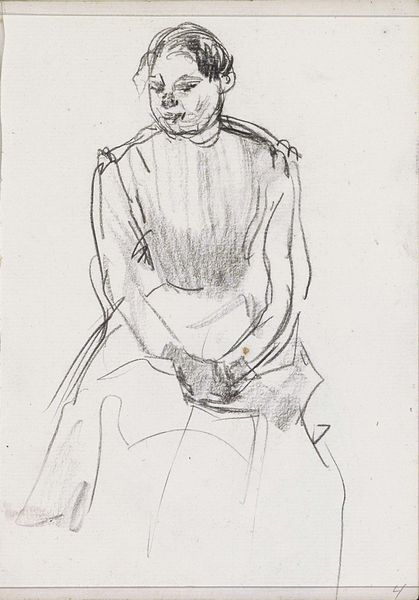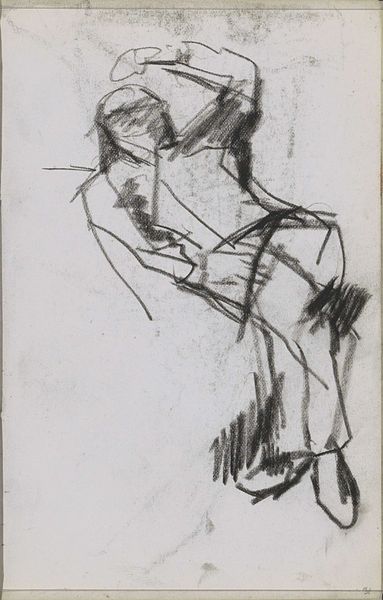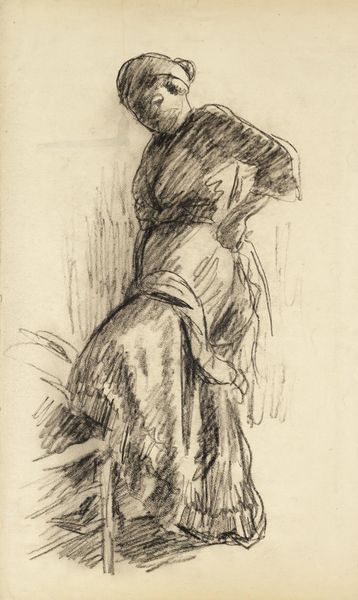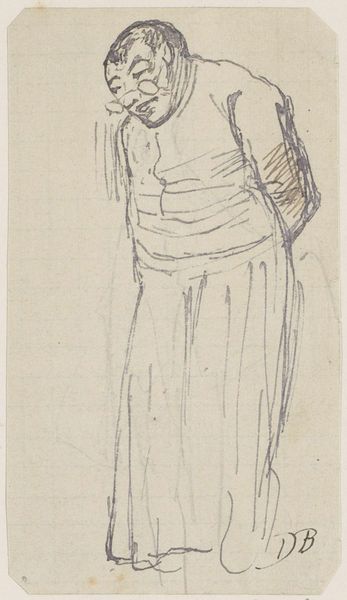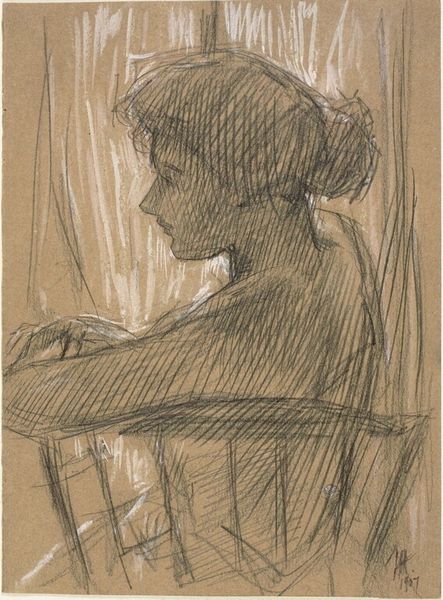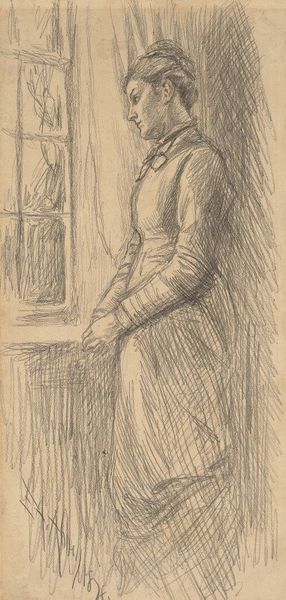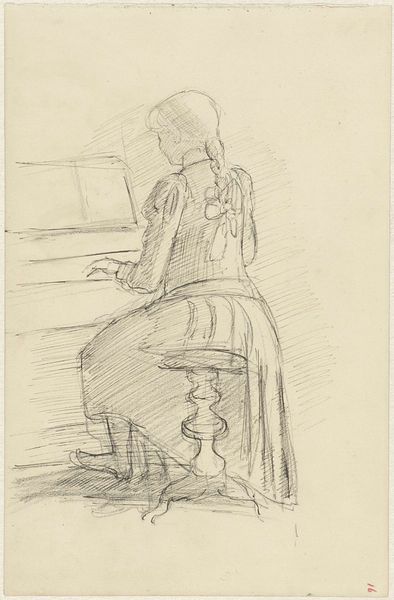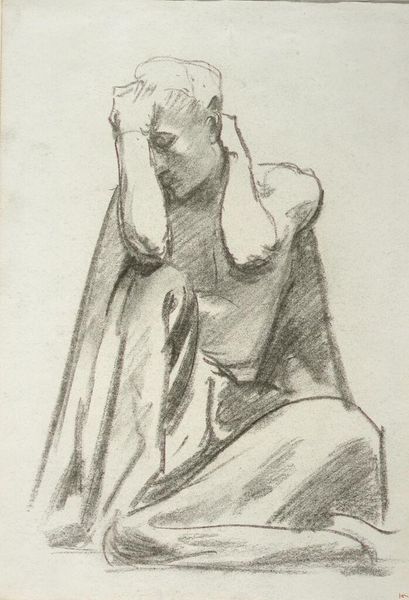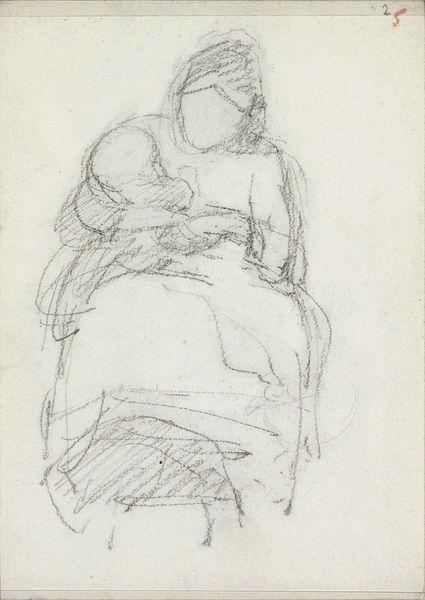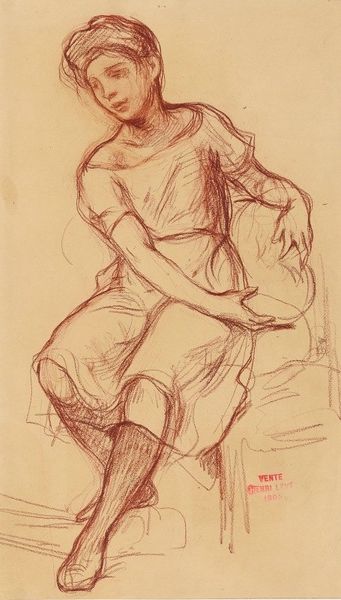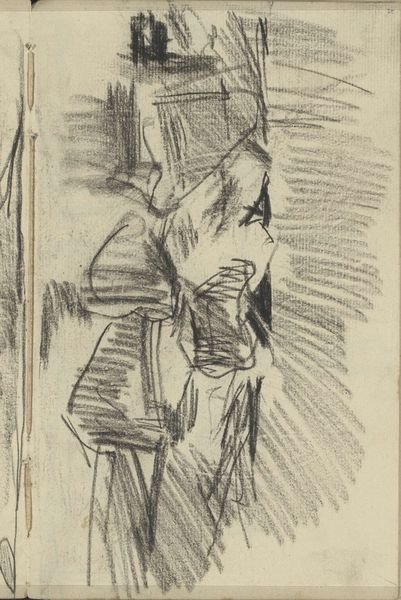
Dimensions: height 192 mm, width 116 mm
Copyright: Rijks Museum: Open Domain
Curator: Let’s spend some time with this drawing by George Hendrik Breitner, titled "Vrouw op een bank," which roughly translates to "Woman on a bench." Breitner likely executed it sometime between 1873 and 1923. Editor: It has a hazy quality. The heavy pencil work gives it a transient and melancholy feel; almost like looking through a fogged window. Curator: Indeed. The loose strokes are typical of Impressionist explorations of light and form. Yet it would be an error to confine Breitner to this label. In viewing this figure we need to take account of how turn-of-the-century artistic milieus framed women— particularly in terms of class, agency, and representation. How does this relate to earlier art history when paintings of bourgeois or aristocratic women presented very different cultural symbols? Editor: Focusing on purely visual aspects, what grabs me is the figure's composition within the space, in particular how he's used these dark, almost oppressive pencil lines around her head to frame it and pull us into this moment. Note also that the figure is almost unfinished around the face - Breitner focused the strongest line work around the figure's posture and dress and the background that gives an overall weight to the scene. Curator: Precisely. Look closer. See the social position Breitner negotiates in sketching a woman within what appears to be domestic interiors. Consider her downcast posture, and think about how his drawing participates in larger cultural debates. Is the artist exploring new conceptions of feminine psychology? Editor: Perhaps. But these rough pencil strokes and erasures reveal an intense working process; the sketchy quality reveals Breitner's interest in capturing an immediacy, the flux of light and shadow, more than constructing some ideal or preconceived symbol. Look at the confidence of some lines versus others. It makes it interesting from a pure art point of view! Curator: Right. To engage with Breitner's formal techniques invites discourse to open the meaning into conversations about his intentions, biases, and cultural conditions of art making. A balance is important. Editor: Indeed. Both close visual reading and broad contextual knowledge are crucial if one is to unpack "Woman on a Bench".
Comments
No comments
Be the first to comment and join the conversation on the ultimate creative platform.
